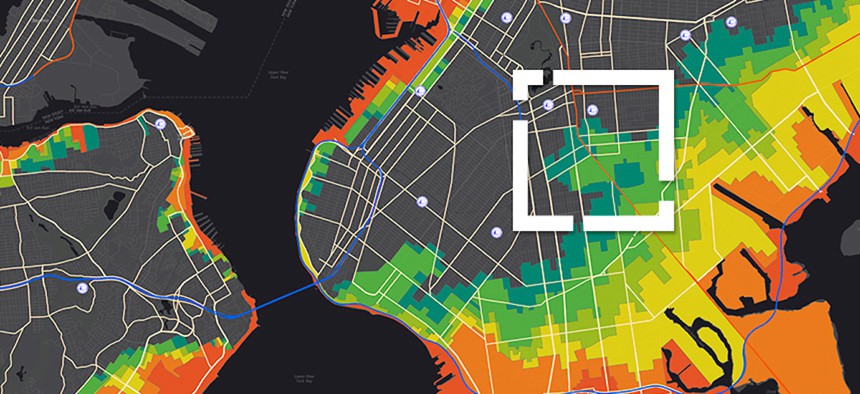sponsor content What's this?
Data Versus Analytics: How Communities are Becoming Smart

Presented by
Esri

By unleashing the power of the data they’re collecting, community governments can serve their constituents more efficiently and effectively.
Communities and cities are home to an enormous amount of data. There is a reason why we use the term “big data” to describe today’s data landscape — because its size is as large as its potential. Government agencies collect new data every day: every time they interact with a constituent or deliver a service, a record is kept. Data collection, however, is only the first step in the process of becoming a smart community. To take full advantage of their data, communities need to refine and leverage it.
That is where analytics come in. Analytics turns data into actionable information by discovering patterns and relationships within it. If data is your list of ingredients, analytics is your recipe; the data is what you’re working with in its base form, while analytics is the process in which ingredients are broken down, combined or enhanced to create a final product. When aggregated and analyzed, data can paint a full, long-term portrait of the community, its constituency, its challenges and how to solve them, but it is not going to do this by itself. It requires action, tools and expertise.
Unfortunately, some communities aren’t taking those additional steps. While many cities have data officers, few have staff dedicated solely to analytics. Some don’t believe they have the budget, others don’t realize the numerous potential benefits or are hesitant to change. Whatever the reason, it has never been easier for cities of all sizes to use modern technology and get started and become a smart community. To be “smart,” it doesn’t matter how big or small the community is, or where it is located — what’s important is a community’s pledge to productivity, efficiency, collaboration and transparency through analytics.
This is especially important in today’s contentious political environment. Public scrutiny of government practices and budgets are at an all-time high. Cities need to ensure that their staffs are efficient, their processes are cost-effective, and their decisions are well-informed. By unleashing the power of the data they’re collecting, community governments can not only serve their constituents more efficiently, they can increase transparency as well. This can help governments build public trust with their citizens and fulfill their missions in the short term, while also setting their agency up for long-term success.
The ways in which communities are utilizing these abilities are as diverse as the communities themselves. The city of Charlotte, North Carolina, uses Esri technology to create an open data portal aimed to increase community engagement. In the portal, city datasets including departmental data and salaries was posted for public consumption. In addition to helping improve transparency between the city and its citizens, the data portal has also improved the city’s record-management process and helped the city anticipate future needs.
Other communities are using data and analytics to improve emergency response. With its Winter Cost Calculator, the Iowa Department of Transportation visualizes the costs of keeping state-owned roads during the winter. Using location-enabled data collection systems embedded in city vehicles, officials can analyze exactly how much time, effort and resources have been spent in road maintenance, as well as where future efforts need to be focused. Citizens can use the dashboard to see just how much has been spent in road maintenance, and anticipate when their street will be plowed.
Real-time analytics can also help public safety initiatives. In California, the Oakland Police Department used Esri technology to build the Calls for Service application, an interactive map that displays real-time crime location data. Using the web app, citizens can get a full view of all of the 911 calls that have been placed in their vicinity over a 24-hour period.
The defining factors in these communities are technology and location. In many cases, the communities have already been collecting data for years, but it was siloed in separate departments away from the general public. Modern technology and new approaches have enabled communities to share it across departments and with their constituents, in interactive maps and dashboards that are easy to understand. In tying their data to specific locations, communities are doing more to improve the services they provide and the lives of their constituents, especially as they pertain to safety and emergencies. This type of hyper-local problem solving helps both sides better understand each other.
Through user-friendly platforms, citizens can now get a better sense of their community, their government’s goals and how government resources are being allocated. In turn, governments are able to utilize data to track progress, increase transparency and ensure that important decisions are well informed. Today, there is no need to spend energy building a completely custom platform. In partnering with a proven leader and using a platform that has already been tried and tested in the private sector, government can empower data to make their community safer, and more efficient and sustainable.
Learn more about Esri’s approach to smart communities here.
This content is made possible by our sponsor. The editorial staff of Route Fifty was not involved in its preparation.
NEXT STORY: How Government is Innovating in the Cloud





